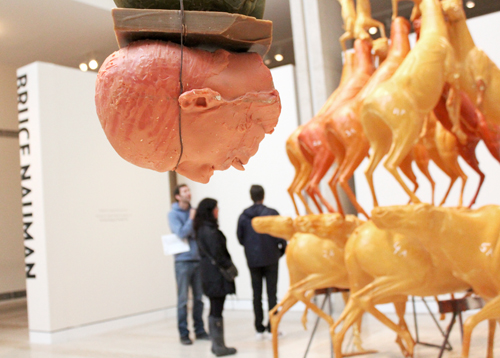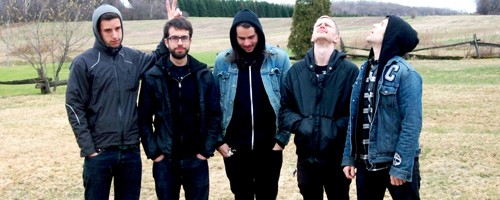The Portland Art Museum is currently showcasing three large-scale sculptures by Bruce Nauman, on view through Sept. 16. This exhibition of Nauman’s work is the third in an ongoing series showcasing contemporary sculptors.
Dada revisited
The Portland Art Museum is currently showcasing three large-scale sculptures by Bruce Nauman, on view through Sept. 16. This exhibition of Nauman’s work is the third in an ongoing series showcasing contemporary sculptors.

Nauman is a prolific and highly visible contemporary American artist. He began his career in the late 1960s and is known for his post-minimalist style. He received his master’s in fine arts from the University of California, Davis in 1966.
Wondering what to do as a studio artist, he soon decreed, “If I was an artist and I was in the studio, then whatever I was doing in the studio must be art. At this point art became more of an activity and less of a product.”
Throughout his professional life, Nauman has blended many disciplines and traditions. He’s created art on video, with neon and with airplanes: In 2009, he realized his 1969 dream of skywriting the phrase “LEAVE THE LAND ALONE” over Pasadena, Calif.
Critic Rosalind Krauss famously described Nauman’s sculptural work as “sculpture in the expanded field.” His installation pieces, which include fantastical, claustrophobic corridors, are one example of how Nauman has turned away from traditional sculpture. At the same time, he has abandoned the formality and structure of minimalism, choosing instead to apply the body-oriented ideas of performance art to locate his work firmly in the realm of human emotional experience.
His corridors are designed to elicit emotions as viewers interacted with them, and many of his early video and photographic pieces explore the juxtaposition of language symbols and the human body (namely, the artist’s own).
The three works on view at the museum date from 1980–90, a period of Nauman’s career characterized by figurative themes. Nauman’s continued interest in the role of the artist is on full display in Four Pairs of Heads. Like Nauman’s work with corridors, these disembodied heads suggest deprivation in their isolation. The artist cast the heads from three models, and then cast his own tongue to include in their mouths.
Beyond this symbolic presence, Nauman intentionally leaves evidence of the artist’s process in the finished sculptures, which are arranged like a hunter might mount prized trophies.
Nauman’s interest in manipulating physical bodies is likewise front and center in Animal Pyramid—a foam maquette for a brass sculpture of the same name that stands, baseless, in a field in Des Moines, Iowa. Deer forms are arranged in a tiered pyramid topped by what is, presumably, a canine predator.
With Animal Pyramid, Nauman creates a reflection on the interface between man and beast. The artist reveals a natural order—carnivores are, after all, on top of the food chain—but at the same time highlights the tentative dominion of man over nature.
Nauman has said that Animal Pyramid uses “[the animal’s] cultural meaning as an expression of human emotion and condition.” Nauman claims to be “taking them from the realm of the animal and utilizing them as a tool, as an extension, as a method of communicating.” As in Four Pairs of Heads, the artist is still visible.
Nauman makes no attempt to hide the underlying structure; the wire tethering the beasts together remains in plain sight, reminding the viewers that it was a human hand that fastened them to one another. Wire circles the dog’s legs and the necks and chests of the deer and cows beneath them. The structure’s precariousness suggests the tenuous human domination over the natural world—and of the artist over his work.
These pieces are well-suited to one another. They both suggest themes of possession, manipulation and communication through bodies (human or otherwise), art and language. Together, they illustrate Nauman’s remarkable breadth and evocativeness and invite the viewer to reflect on what artists can reveal about power, domination and violence.
While not as accessible or pleasant as skywriting, the artist’s devotion to manipulating symbols is loud and clear. Bruce Nauman is interested in the role of the artist as a communicator. Although a larger exhibition might paint a better picture of Nauman’s project, there’s plenty here to mull over.




